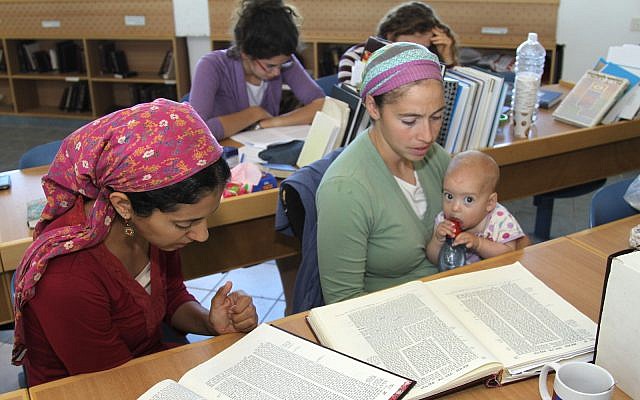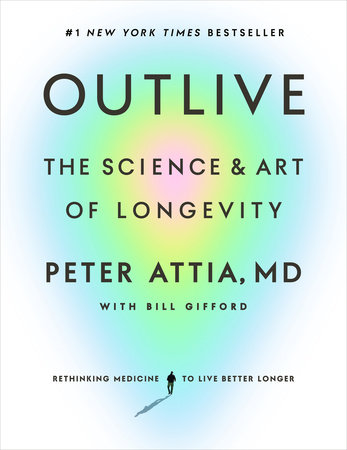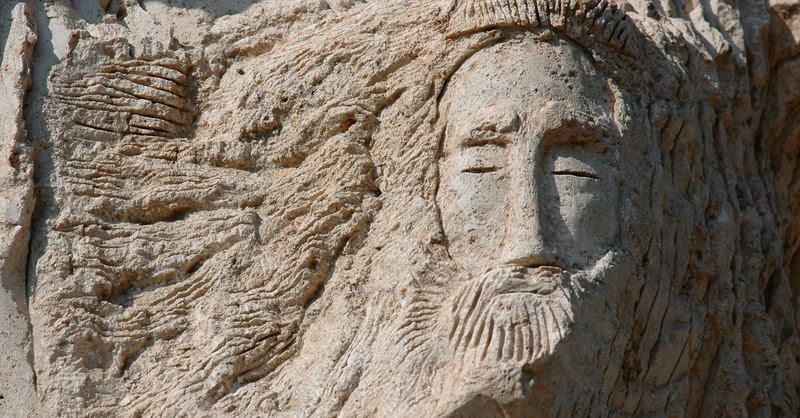We begin on דף כ עמוּד ב, with the concept of the סוֹטָה getting a reprieve for up to three years even if she is guilty of adultery. It is not a pardon. In essence she gets some slack for having done good deeds or acting meritoriously in other ways, and the סוֹטָה water that she drinks doesn’t take effect immediately. Rather, its toxicity to her is deferred.
יֵשׁ לָהּ זְכוּת הָיְתָה וְכוּ׳. מַנִּי מַתְנִיתִין? לָא אַבָּא יוֹסֵי בֶּן חָנָן, וְלָא רַבִּי אֶלְעָזָר בֶּן יִצְחָק אִישׁ כְּפַר דָּרוֹם, וְלֹא רַבִּי יִשְׁמָעֵאל
The Mishnah states: If she has merit, it delays punishment…for one year…for two years…for three years. The Gemara asks: Whose opinion is expressed in the mishna? It is not the opinion of אַבָּא יוֹסֵי בֶּן חָנָן, and not the opinion of רַבִּי אֶלְעָזָר בֶּן יִצְחָק אִישׁ כְּפַר דָּרוֹם, and not the opinion of רַבִּי יִשְׁמָעֵאל.
דְּתַנְיָא: אִם יֵשׁ לָהּ זְכוּת תּוֹלָה לָהּ שְׁלֹשָׁה חֳדָשִׁים, כְּדֵי הַכָּרַת הָעוּבָּר, דִּבְרֵי אַבָּא יוֹסֵי בֶּן חָנָן. רַבִּי אֶלְעָזָר בֶּן יִצְחָק אִישׁ כְּפַר דָּרוֹם אוֹמֵר: תִּשְׁעָה חֳדָשִׁים, שֶׁנֶּאֱמַר: ״וְנִקְּתָה וְנִזְרְעָה זָרַע״, וּלְהַלָּן הוּא אוֹמֵר: ״זֶרַע יַעַבְדֶנּוּ יְסֻפַּר״, זֶרַע הָרָאוּי לְסַפֵּר.
This is as it is taught in a baraisa: If she has merit (זְכוּת), it delays punishment for her for three months, equivalent to the time necessary to recognize the fetus; this is the statement of אַבָּא יוֹסֵי בֶּן חָנָן. R’ Elazar ben Yitzcḥak of כְּפַר דָּרוֹם says: זְכוּת delays punishment for nine months, as it is stated: “Then she shall be cleared, and shall conceive seed” (וְאִם־לֹ֤א נִטְמְאָה֙ הָֽאִשָּׁ֔ה וּטְהֹרָ֖ה הִ֑וא וְנִקְּתָ֖ה וְנִזְרְעָ֥ה זָֽרַע – Bamidbar 5:28). It is possible to infer from this that if she has זְכוּת she will be cleared temporarily, for the length of time required to conceive a child, and there, in Tehilim, it says: “A seed shall serve him; it shall be told of the Lord unto the next generation” (זֶ֥רַע יַֽעַבְדֶ֑נּוּ יְסֻפַּ֖ר לַֽאדֹנָ֣י לַדּֽוֹר – Psalms 22:31). This indicates that the seed must be fit to tell of the Lord once it matures, and a child can live only if it is born after the culmination of nine months in the womb.
וּמַאי אַף עַל פִּי שֶׁאֵין רְאָיָה לַדָּבָר זֵכֶר לַדָּבָר? דִּלְמָא שָׁאנֵי גּוֹיִם, דְּלָא מִפְּקִיד דִּינָא עֲלַיְיהוּ
The Gemara asks: And what does R’ Yishmael mean by stating: Although there is no explicit proof for the concept of merit delaying punishment for twelve months, there is an allusion to the concept? The פְּסוּקִים he cites state explicitly that punishment can be delayed for twelve months. The Gemara answers: The proof is not explicit, as perhaps gentiles are different, as swift judgment is not administered upon them in this lifetime as it is upon the Jewish people, with whom G-d is more precise in executing judgment.
Onward to the next key statement in the Mishnah:
וְיֵשׁ זְכוּת תּוֹלָה שָׁלֹשׁ שָׁנִים כּוּ׳. זְכוּת דְּמַאי? אִילֵּימָא זְכוּת דְּתוֹרָה — הָא אֵינָהּ מְצֻוּוֹה וְעוֹשָׂה הִיא! אֶלָּא זְכוּת דְּמִצְוָה.
And there is זְכוּת that delays punishment for three years. The Gemara asks: Which זְכוּת can delay the punishment of a סוֹטָה? If we say it is the merit of the Torah that she has studied; but a woman who studies Torah is one who is not commanded to do so and performs a mitzva, whose reward is less than that of one who is obligated? Therefore, it would be insufficient to suspend her punishment. Rather, perhaps it is the זְכוּת of a mitzva that she performed.
זְכוּת דְּמִצְוָה מִי מַגְּנָא כּוּלֵּי הַאי? וְהָתַנְיָא: אֶת זוֹ דָּרַשׁ רַבִּי מְנַחֵם בַּר יוֹסֵי: ״כִּי נֵר מִצְוָה וְתוֹרָה אוֹר״, תָּלָה הַכָּתוּב אֶת הַמִּצְוָה בְּנֵר, וְאֶת הַתּוֹרָה בְּאוֹר. אֶת הַמִּצְוָה בְּנֵר, לוֹמַר לָךְ: מָה נֵר אֵינָהּ מְגִינָּה אֶלָּא לְפִי שָׁעָה — אַף מִצְוָה אֵינָהּ מְגִינָּה אֶלָּא לְפִי שָׁעָה
The Gemara asks: Does the זְכוּת of a mitzva protect one so much as to delay her punishment? But isn’t it taught in a baraisa: רַבִּי מְנַחֵם בַּר יוֹסֵי interpreted this verse homiletically: “For the mitzva is a lamp and the Torah is light” (כִּ֤י נֵ֣ר מִ֭צְוָה וְת֣וֹרָה א֑וֹר וְדֶ֥רֶךְ חַ֝יִּ֗ים תּוֹכְח֥וֹת מוּסָֽר – Proverbs 6:23). The verse associates the mitzva with a lamp and the Torah with the light of the sun. The mitzva is associated with a lamp in order to say to you: Just as a lamp does not protect one by its light extensively but only temporarily, while the lamp is in one’s hand, so too, a mitzva protects one only temporarily, i.e., while one is performing the mitzva.
וְאֶת הַתּוֹרָה בְּאוֹר, לוֹמַר לָךְ: מָה אוֹר מֵגֵין לָעוֹלָם, אַף תּוֹרָה מְגִינָּה לָעוֹלָם. וְאוֹמֵר: ״בְּהִתְהַלֶּכְךָ תַּנְחֶה אֹתְךָ וְגוֹ׳״. ״בְּהִתְהַלֶּכְךָ תַּנְחֶה אֹתְךָ״ — זֶה הָעוֹלָם הַזֶּה. ״בְּשָׁכְבְּךָ תִּשְׁמוֹר עָלֶיךָ״ — זוֹ מִיתָה. ״וַהֲקִיצוֹתָ הִיא תְשִׂיחֶךָ״ — לֶעָתִיד לָבֹא
And the Torah is associated with light in order to say to you: Just as the light of the sun protects one forever, so too, the Torah one studies protects one forever; and it states in the previous verse with regard to the Torah: “When you walk, it shall lead you; when you lie down, it shall watch over you; and when you awake, it shall talk with you” (בְּהִתְהַלֶּכְךָ֨ ׀ תַּנְחֶ֬ה אֹתָ֗ךְ בְּֽ֭שכְבְּךָ תִּשְׁמֹ֣ר עָלֶ֑יךָ וַ֝הֲקִיצ֗וֹתָ הִ֣יא תְשִׂיחֶֽךָ – Proverbs 6:22). The Gemara explains: “When you walk, it shall lead you”; this is referring to when one is in this world. “When you lie down, it shall watch over you”; this is referring to the time of death, when one lies in his grave. “And when you awake, it shall talk with you”; this is referring to the time to come after the resurrection of the dead. The Torah that one studies protects and guides him both in this world and in the next world.

מָשָׁל לְאָדָם שֶׁהָיָה מְהַלֵּךְ בְּאִישׁוֹן לַיְלָה וַאֲפֵילָה, וּמִתְיָירֵא מִן הַקּוֹצִים וּמִן הַפְּחָתִים וּמִן הַבַּרְקָנִים, וּמֵחַיָּה רָעָה וּמִן הַלִּסְטִין, וְאֵינוֹ יוֹדֵעַ בְּאֵיזֶה דֶּרֶךְ מְהַלֵּךְ
This can be illustrated by a parable, as it is comparable to a man who is walking in the blackness of night and the darkness, and he is afraid of the thorns, and of the pits, and of the thistles, which he cannot see due to the darkness. And he is also afraid of the wild animals and of the bandits that lurk at night, and he does not know which way he is walking.
נִזְדַּמְּנָה לוֹ אֲבוּקָה שֶׁל אוּר — נִיצַּל מִן הַקּוֹצִים וּמִן הַפְּחָתִים וּמִן הַבַּרְקָנִים, וַעֲדַיִין מִתְיָירֵא מֵחַיָּה רָעָה וּמִן הַלִּיסְטִין, וְאֵינוֹ יוֹדֵעַ בְּאֵיזֶה דֶּרֶךְ מְהַלֵּךְ. כֵּיוָן שֶׁעָלָה עַמּוּד הַשַּׁחַר — נִיצַּל מֵחַיָּה רָעָה וּמִן הַלִּיסְטִין, וַעֲדַיִין אֵינוֹ יוֹדֵעַ בְּאֵיזֶה דֶּרֶךְ מְהַלֵּךְ. הִגִּיעַ לְפָרָשַׁת דְּרָכִים — נִיצַּל מִכּוּלָּם
If a torch of fire comes his way, which is analogous to a mitzva, he is safe from the thorns and from the pits and from the thistles, but he is still afraid of the wild animals and of the bandits, and still does not know which way he is walking. Once the light of dawn rises, which is analogous to Torah study, he is safe from the wild animals and from the bandits, which no longer roam the roads, but he still does not know which way he is walking. If he arrives at a crossroads and recognizes the way, he is saved from all of them.
דָּבָר אַחֵר: עֲבֵירָה מְכַבָּה מִצְוָה, וְאֵין עֲבֵירָה מְכַבָּה תּוֹרָה, שֶׁנֶּאֱמַר: ״מַיִם רַבִּים לֹא יוּכְלוּ לְכַבּוֹת אֶת הָאַהֲבָה״.
Alternatively, the pasuk associates the mitzva with a lamp and the Torah with the light of the sun in order to teach that a transgression extinguishes the merit of a mitzva one performed, but a transgression does not extinguish the merit of the Torah one studied, as it is stated: “Many waters cannot extinguish the love, neither can the floods drown it” (מַ֣יִם רַבִּ֗ים לֹ֤א יֽוּכְלוּ֙ לְכַבּ֣וֹת אֶת־הָֽאַהֲבָ֔ה וּנְהָר֖וֹת לֹ֣א יִשְׁטְפ֑וּהָ אִם־יִתֵּ֨ן אִ֜ישׁ אֶת־כל־ה֤וֹן בֵּיתוֹ֙ בָּאַהֲבָ֔ה בּ֖וֹז יָב֥וּזוּ לֽוֹ – Shir Hashirim 8:7). The Torah is compared to love several times in the Shir Hashirim. One can conclude from the baraisa that the merit of performing a mitzva is insufficient to suspend punishment.
אָמַר רַב יוֹסֵף: מִצְוָה, בְּעִידָּנָא דְּעָסֵיק בָּהּ — מַגְּנָא וּמַצְּלָא, בְּעִידָּנָא דְּלָא עָסֵיק בָּהּ — אַגּוֹנֵי מַגְּנָא, אַצּוֹלֵי לָא מַצְּלָא. תּוֹרָה, בֵּין בְּעִידָּנָא דְּעָסֵיק בָּהּ וּבֵין בְּעִידָּנָא דְּלָא עָסֵיק בָּהּ — מַגְּנָא וּמַצְּלָא.
רַב יוֹסֵף said that with regard to a mitzva, at the time when one is engaged in its performance it protects one from misfortune and saves one from the יֵצֶר הָרַע; at the time when one is not engaged in its performance, it protects one from misfortune but it does not save one from the יֵצֶר הָרַע. With regard to Torah study, both at the time when one is engaged in it and at the time when one is not engaged in it, it protects one from misfortune and saves one from the יֵצֶר הָרַע. Therefore, the merit of the woman’s mitzvos does protect her from misfortune and delay her punishment.
Let’s zoom ahead:
אוֹמֵר בֶּן עַזַּאי: חַיָּיב אָדָם לְלַמֵּד אֶת וְכוּ׳. רַבִּי אֱלִיעֶזֶר אוֹמֵר: כל הַמְלַמֵּד אֶת בִּתּוֹ תּוֹרָה — מְלַמְּדָהּ תִּיפְלוּת. תִּיפְלוּת סָלְקָא דַּעְתָּךְ? אֶלָּא אֵימָא: כְּאִילּוּ לִמְּדָהּ תִּיפְלוּת.
The Mishnah states: From here בֶּן עַזַּאי learns: A person is obligated to teach his daughter Torah, so that if she drinks and does not die immediately, she will know that some merit of hers has delayed her punishment. רַבִּי אֱלִיעֶזֶר says: Anyone who teaches his daughter Torah is teaching her promiscuity. The Gemara asks: Could it enter your mind to say that teaching one’s daughter Torah is actually teaching her תִּיפְלוּת? Rather, say: It is considered as if he taught her תִּיפְלוּת.
At this juncture Rabbi Stern shared material from a sefer, Shiurei Hayom, written by R’ Mechel Zilber, who cited a passage from the Chofetz Chayim regarding teaching one’s daughters Torah contained in his לִקוֹטֵי הַלָכוֹת. He states that even though לְכַתְחִילָה the teaching one’s daughters only refers to תּוֹרה שׁבּע״פּ and not תּוֹרָה שֶׁבִּכְתַב, one cannot equate teaching one’s daughter תּוֹרָה שֶׁבִּכְתַב with teacher her תִּפְלוּת (promiscuity). He writes: “וכתב שם בהגהה וז״ל, ונראה דכל זה דוקא בזנים שלפנים שלפנינו, שכל אחד היה דר במקום אבותיו וקבלת האבות היה חזק מאד אצל כל אחד ואחד להתנהג בדרך שדרכו אבותיו …”
In essence, given the influences that young girls are subject to in today’s society, it is a virtue for fathers to teach them about Torah pertinent to following in the proper path and laws that they should follow pertinent to young women, irrespective of the source being תּוֹרָה שֶׁבִּכְתַב or תּוֹרָה שֶׁבְּעַל פֶּה.
Parenthetically, there is a nice discussion at the Stack Exchange (מִי יוֹדֵעַ) as to whether or not the concept of teaching one’s son a livelihood (“parnassah”) extends to teaching one’s daughter a livelihood as well. It parallels the issue of learning and secular influences in general above, and that the necessities of a woman working in this generation are different than in yesteryear. You can check that out here.
רַבִּי יְהוֹשֻׁעַ אוֹמֵר: רוֹצָה אִשָּׁה וְכוּ׳. מַאי קָאָמַר? הָכִי קָאָמַר: רוֹצָה אִשָּׁה בְּקַב וְתִיפְלוּת עִמּוֹ, מִתִּשְׁעַת קַבִּין וּפְרִישׁוּת.
The Mishnah states that רַבִּי יְהוֹשֻׁעַ says: A woman desires to receive the amount of a kav of food and a sexual relationship rather than to receive nine kav of food and abstinence. The Gemara asks: What is he saying? This is what רַבִּי יְהוֹשֻׁעַ is saying: A woman desires to receive the amount of a kav of food and with it a sexual relationship, i.e., her husband’s availability to fulfill her sexual desires, rather than nine kav of food and with it abstinence, and since her desires are of a sexual nature, it is undesirable for her to study Torah.
Tosafos comments here that a woman would gladly give up some material gains for having her husband tend more to her physical and emotional needs. (One is tempted to add here, “וְהַמֵבִין יָבִין”.)
הוּא הָיָה אוֹמֵר: חָסִיד שׁוֹטֶה כּוּ׳. הֵיכִי דָּמֵי חָסִיד שׁוֹטֶה? כְּגוֹן דְּקָא טָבְעָה אִיתְּתָא בְּנַהֲרָא, וְאָמַר: לָאו אוֹרַח אַרְעָא לְאִיסְתַּכּוֹלֵי בַּהּ וְאַצּוֹלַהּ.
The Mishnah continues: He (R’ Yehoshua) would say: A foolish man of piety, and a conniving wicked person, and an abstinent woman, and those who injure themselves out of false abstinence; all these are people who erode the world. The Gemara asks: Who is considered a foolish man of piety? For example, it is one who sees that a woman is drowning in a river, and he says: It is not proper conduct to look at her while she is undressed and save her.

היכי דמי חסיד שוטה – ירושלמי ראה תינוק מבעבע בנהר אמר לכשאחלוץ תפילין אצילנו עד כשהוא חולץ תפילין הוציא זה את נפשו
Tosafos adds to this example of a foolish man, someone who would not save an infant from drowning in a river until he first took his tefilin off, as to not get them wet. I like the tenor of this discussion, as it puts adhering to the letter of the law in its proper perspective. Life or death situations present with judgement calls that require discretion. To think that there are strict guidelines always available is foolishness.









/arc-anglerfish-arc2-prod-pmn.s3.amazonaws.com/public/DRYDEIF6VVEIXJM22C5YCRE2BU.jpg)













